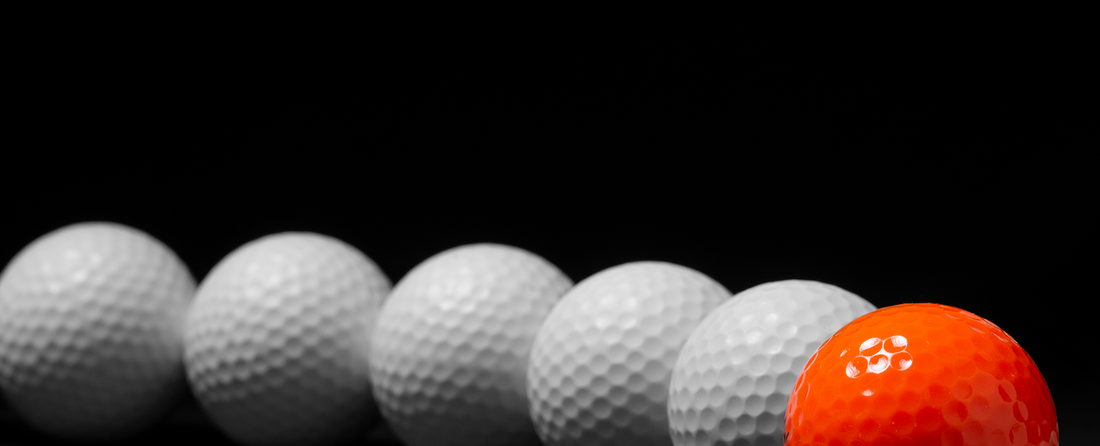What Are Golf Balls Made Of? A Golfer’s Guide to Construction, Materials, and Performance

Every golf ball may look the same on the outside — but inside, it's a high-tech blend of layers engineered for speed, spin, and control.
In this guide, we’ll explore what golf balls are made of, how the core, mantle, and cover work together, and what makes premium balls like Agape’s MP5 and VS3 stand out.
Whether you’re curious about the inside of a golf ball, the outside cover materials, or the golf ball manufacturing process, this breakdown will help you choose the right ball for your swing.
Golf ball construction: The Three Key parts and material of a golf ball

Core
The core is the center of a golf ball and acts like its engine.
It’s usually made of polybutadiene rubber — a durable and springy material that stores energy when the ball is hit.
When your club strikes the ball, the core compresses and then quickly rebounds, helping launch the ball into the air.
This process affects how fast the ball travels, how far it goes, and how it feels off the clubface.
Softer cores are easier to compress and are better suited for players with slower swing speeds, while firmer cores can generate more distance for stronger players.
Agape’s MP5 features a dual-core design: the soft inner core boosts backspin for better iron control, while the firm outer core adds power off the tee.
The VS3, on the other hand, uses a large, soft core designed for easy compression — helping moderate-swing players hit longer, straighter shots with less effort.
Mantle
The mantle is the layer between the core and the outer cover. It helps transfer energy from the core to the cover while also playing a key role in spin control and feel.
Made from thermoplastic or ionomer materials, the mantle reduces unwanted spin on long shots — helping drives fly straighter and farther — while preserving control on iron shots.
Agape’s MP5 uses a dual-layer TPE mantle, with a soft outer layer and firmer inner layer. This combination gives you a soft feel and powerful distance off the tee.
The VS3 features a high-rebound ionomer mantle, which helps reduce backspin on drives for a straighter ball flight, while still enhancing overall feel and responsiveness.
Cover
The cover is the outermost layer of a golf ball — the part you actually see and feel.
It plays a big role in how the ball reacts on short shots, especially around the green. Softer materials like urethane create more spin and grip, helping the ball stop quickly or even spin backward after landing. Firmer covers like Surlyn are more durable but offer less spin control.
Both Agape MP5 and VS3 use a urethane cover, giving players that soft, premium feel and enhanced friction with the clubface.
This makes it easier to hit precise approach shots, control the ball on the green, and execute spin-heavy techniques with confidence.
Types of Golf Balls & Who They’re For
Golf balls come in different layer constructions — and each type offers a different blend of distance, control, and feel. The more layers a ball has, the more performance tuning it offers for specific shot types.
|
Type |
Layers |
Best For |
Example |
|
2 piece golf ball |
Core + Cover |
Beginners, durability |
Normal Golf balls |
|
3 piece golf ball |
Core + Mantle + Cover |
Mid-handicappers, balanced control |
Agape 3-piece Urethane |
|
5 piece golf ball |
4+ layers |
Pros |
Agape MP5, Titleist Pro V1x |
How Golf Balls Are Made – The Manufacture Process
While golf balls may look simple on the outside, the manufacturing process is anything but.
Each ball goes through multiple precise steps to ensure consistency, performance, and durability — especially for brands like Agape, where every detail counts.
Core Molding:
The process begins with forming the ball’s core, made of polybutadiene rubber. The rubber is molded under high pressure and heat to create a consistent shape and compression level.

Mantle & Cover Injection Molding:
Next, the mantle layers and urethane cover are injected around the core. Each layer is carefully aligned to achieve the desired spin, feel, and energy transfer.

Surface Cleaning:
Before any branding or paint is applied, the ball is thoroughly cleaned to ensure a smooth surface and proper adhesion for the next steps.

Printing:
Logos and alignment marks are printed using high-precision techniques to ensure clarity and consistency across all balls.

Coating:
A protective, glossy coating is sprayed on each ball to enhance durability and visual appeal.

Agape’s Extra Layer of Quality
What sets Agape apart isn’t just the ball design — it’s the manufacturing precision and quality control:
Golf Ball Compression Testing:
Every batch of balls is tested for compression to ensure consistent softness and performance. This ensures that each MP5 and VS3 performs exactly as intended — whether off the tee or around the green.

Advanced CCD Vision Inspection:
Agape uses high-end CCD image recognition systems to check logo accuracy and surface quality. This level of inspection helps eliminate defects that other factories might miss, maintaining a premium standard across every ball.

